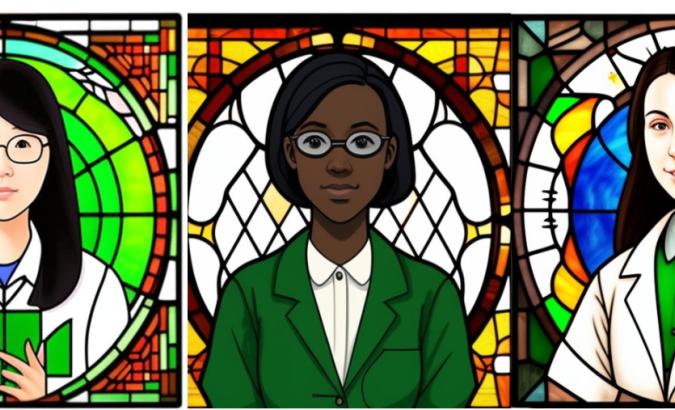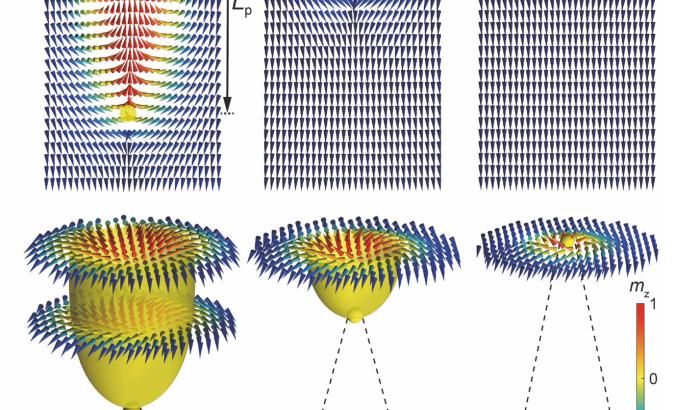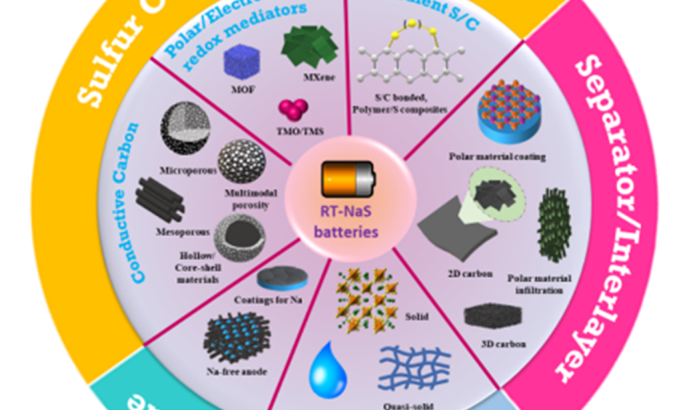1. You studied chemistry at Cardiff, later obtaining a Doctor of Philosophy at Oxford in understanding the electronic structure of post-transition metal oxides. What was it that introduced you to chemistry as a discipline and what led to you studying the subject at university?
I was always fascinated by the fact that chemistry underpins everything around us – from the technology in electronic devices to biological processes. The opportunities that the subject gives you was so broad and interesting that I was hooked.
2. In 2011, you became a Junior Research Fellow at Oxford and then until 2019, you held a Royal Society University Fellowship. What did that entail and what are your memories when you look back on those years?
The freedom to explore! It’s so important to have that time to be creative and learn how to do research. It is a way of working that I will continue to take forward throughout my career.
3. At Imperial, you lead the Solid State Electronic Structure Group in the Department of Materials as well as being head of the Advanced Photoelectron Spectroscopy Laboratory. Your research group focus on the synthesis and characterisation of novel oxide-based materials for energy applications. What is the group working on at the moment?
We are working on many things! And it’s not always immediately apparent how they are linked. The core work at the moment though is developing new catalysts for broad energy applications. In particular, exsolved nanoparticles, where we control the growth of nanoparticles from a doped oxide perovskite. We’ve also been using some cutting edge in-situ TEM at Oak Ridge National Laboratory to understand the mechanism of this process – our most recent work can be read here.
4. Your own research interests specialise in the use of photoelectron spectroscopy to probe the surface chemistry and physics of materials with unparalleled energy resolution and chemical sensitivity using state-of-the-art instrumentation. Are you able to tell us what you are working on currently?
One project is involving the use of ambient pressure photoelectron spectroscopy to study the interaction of oxygen with haemoglobin. It’s the first attempt to use this technique to study a metalloprotein and we have made some interesting discoveries around the physics of the haem centre already, using the system in my lab, as well as at the VERSOX beamline in Diamond.
5. Does your teaching and research motivate and influence each other? Do you continue to get research ideas from your work and incorporate your ideas into your teaching?
Yes it does. I like to bring my research into my teaching, to show my students the importance of the core concerts we are teaching now, allow us to answer questions at the frontier of science discovery.
6. In 2019, you became the Director of Research Complex at Harwell. When did you first become aware of Research Complex and what led you to consider the position?
I have been a user of Diamond and ISIS since I was a PhD student and was hugely impressed by the opportunities that the Rutherford Appleton Laboratory could offer to a research programme. I was a Junior Research Fellow in Oxford when Research Complex was announced and then built. I couldn’t have predicted I’d be the Director 10 years later! I wanted to become Director to bring my leadership skills to a fantastic organisation. The chance to contribute to a vibrant research environment and help hundreds of researchers achieve their goals was an opportunity too good to miss out on!
I have been a user of Diamond and ISIS since I was a PhD student and was hugely impressed by the opportunities that the Rutherford Appleton Laboratory could offer to a research programme. I was a Junior Research Fellow in Oxford when Research Complex was announced and then built. I couldn’t have predicted I’d be the Director 10 years later!
7. The continuation of science was of course vitally important during the pandemic. How did Research Complex respond and continue working to best possible effect during this time?
The most important aspect was to stay operational and provide a safe working environment. Research Complex was pivotal in the Harwell campus response to the pandemic – being the only life science laboratory on site at the time. We worked with the Rosalind Franklin Institute on nanobodies and with Diamond Light Source on the structural determination of the spike proteins. Research Complex should be proud of its global contribution to the science of this disease.
8. With the rebranding and new website now in place, what is your vision for Research Complex? Where do you hope to see Research Complex in ten years?
Continuing to grow its presence, both in the consciousness of researchers around the UK and internationally, but also in its physical footprint. Ensuring that we are in a position to be an institution that UKRI can test new ways of doing science, and being innovative in how we fund and support research.
9. What do you think have been the most exciting and productive areas of research at the Research Complex?
All of them! I’ve been amazed at the breadth of research and also the creativity of our researchers. Even though I am a solid-state chemist, I have been inspired by the life science research that we do, so much so that I now have a drug delivery project with the Mary Lyons Centre!
10. You have authored close to 120 publications. Is there a particular article that you are most proud of?
To be honest, I am proud of all the papers I’ve contributed to. They are statements of all the hard work of undergraduate and PhD students, post-doctoral researchers, colleagues and collaborators around the world.
11. You have provided evidence in person to the House of Lords (and Commons) Select Committee for Science and Technology and have written many articles on policy and research funding, achieving £15m alone for research at Imperial. What directions will you be advising that the necessary funding is available for projects we must support, not least that we be more resilient and prepared in future when a pandemic happens again?
I am very keen on science policy, and having a diversity of thought when it comes to how we fund research, and a plurality of approaches. I have been advocating for a universal basic income approach for science for many years now, and have written a number of articles on this topic. This would not be a replacement for peer-review, but a complement for it. I think we could unleash significant creativity with an approach like this, as well as temper the significant injustices that exist in the current winner-takes-all funding approach.
12. Who have been the people who have been influential in your career?
My PhD supervisor, Professor Russell Egdell, without whom I wouldn’t have the career I have now. He taught me numerous things. The first is to devote yourself to delivering the highest quality science you can achieve, the second is to be kind and supportive to those around you.
13. If you had not got involved in the field of chemistry, what do you think you would have done? (Is there another field that you could have seen yourself making an impact on?)
This is a very good question! I don’t think there is any other particular area that I would have moved into, but I know I would bring the same approach that I bring now. Building supportive and creative environments is something that I would also bring to any role. I have had an opportunity to do this in my current spin out, Solveteq – a battery recycling company – where I am a co-founder.




